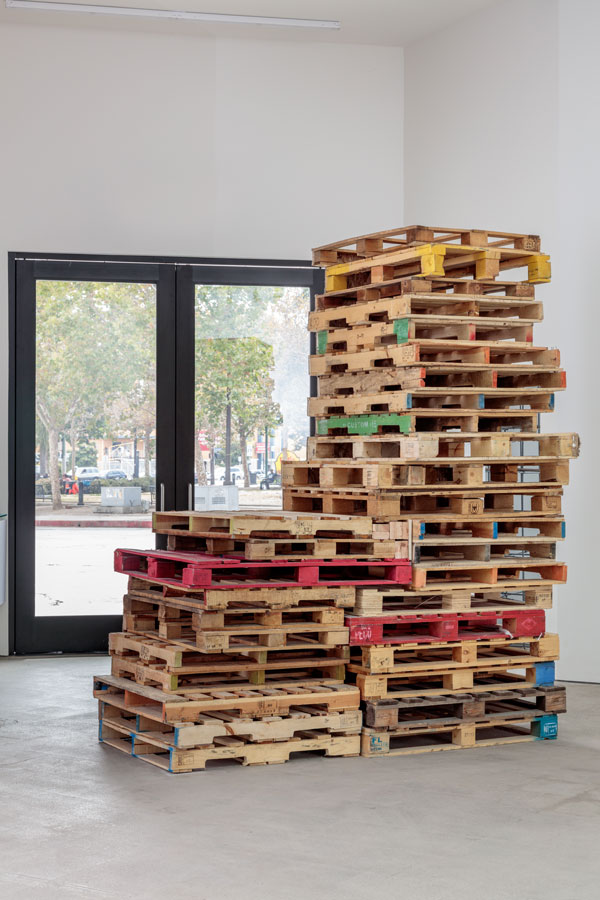Ruben Ochoa’s “SAMPLED y SURVEYED” illustrates the artist’s penchant for transforming basic construction materials into structural installations charged with meaning. Primarily working in wood, metals and concrete, Ochoa’s referential works function as tools with which we can consider issues of social class and identity, while highlighting the artist’s interest in urban space. Despite their Minimalist appearance, Ochoa’s sculptures are contextually laden; primarily concerned with architectural and urban spaces’ ability to dictate our experiences, and, secondarily, those experiences as articulated from the perspective of a Latin American artist.
Deconstructing the exhibition’s title as a departure point, Ochoa alludes to his heritage and dual identity as a first-generation Mexican-American immigrant with the inclusion of “y” rather than “and.” To “sample” is to test and explore, as the exhibition intends to examine the natural and built environments by way of construction materials. Likewise, to “survey,” typically a function of topographic analysis, is to verify your own parameters and the parameters of those who surround you. This denotes Ochoa’s interest in urban space as an invisible social construct with the ability to control, isolate and marginalize.
Works like Economías Apíladas/Stacked Economies (2017) and Ebb and Flow (2017) speak to the social tensions found in the urban environment through their materiality and strategic placement in the gallery. The former—a nine-foot-tall stacked tower of wood pallets and pieces of oriented strand board—creates an instant confrontation between spectator and structure, as its commanding presence receives the visitor upon their arrival. The latter, dissonantly suspended over the viewer, is comprised of wood pallets and warped strands of rebar. Further activating the space, Ochoa drilled holes into the concrete floor, positioning the rebar within it and allowing Ebb and Flow to fuse with the interior.
While both pieces are meant to command and challenge the way visitors navigate through space, Ochoa’s choice of materials become carriers of socio-economic meaning. Wood pallets, used in both Economías Apíladas and Ebb and Flow, become signifiers to the laboring class. Contributing to and quite literally shaping society while simultaneously disregarded, here, the laboring class gets a voice by way of the materials they predominantly work with.
Homage continues to be paid to the working class throughout the exhibition, as rods of rusty rebar are covered in graphite and hammered onto paper, representative of manual labor in both form and process in Steel Life, Roman Numeral Five (2010). Likewise, in Sometimes walls occur (2009), a thick layer of concrete is troweled on paper. Void of any visible mounting device or nails, the piece lies flat against the wall, yet again suggestive of the laborer’s invisible hand.
Ochoa’s sensitive approach to and handling of basic construction materials exposes the deep-rooted ideologies within the built environment and reveals the need for a reevaluation of how closely we examine our day-to-day surroundings. Pallets, concrete, tie wire and rebar are no longer only resources associated with construction; rather, they have the power to shape our social interactions and signify the intangible.



